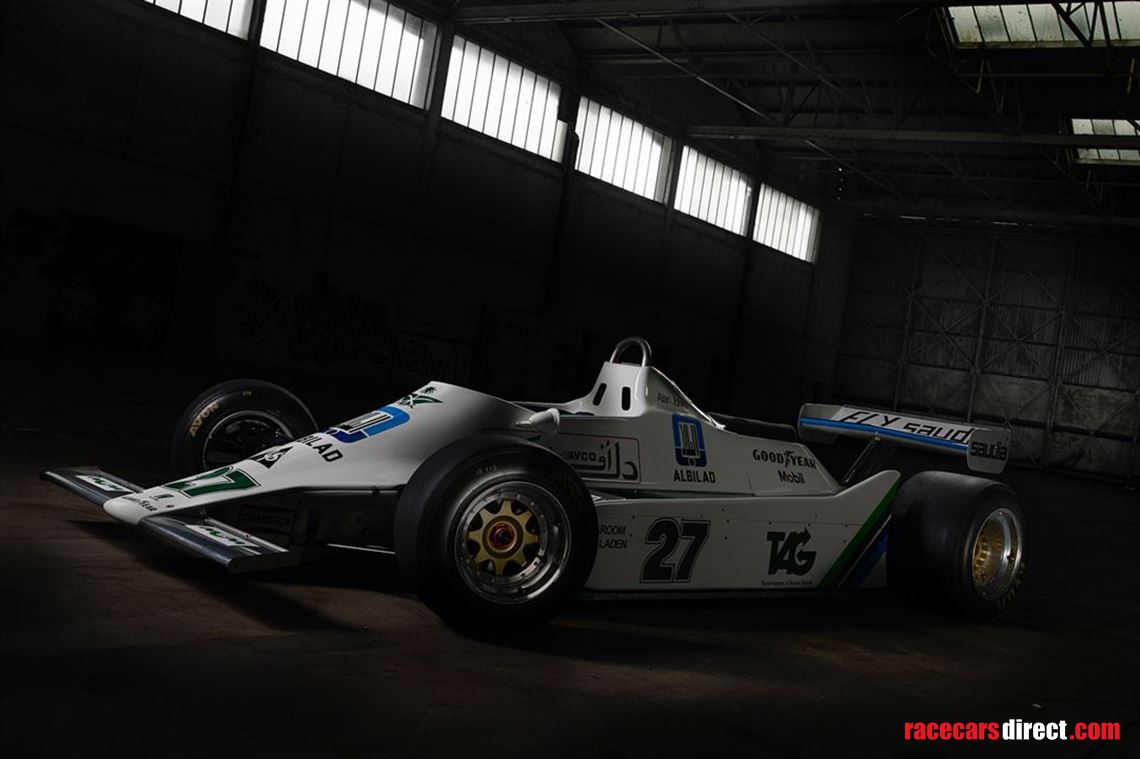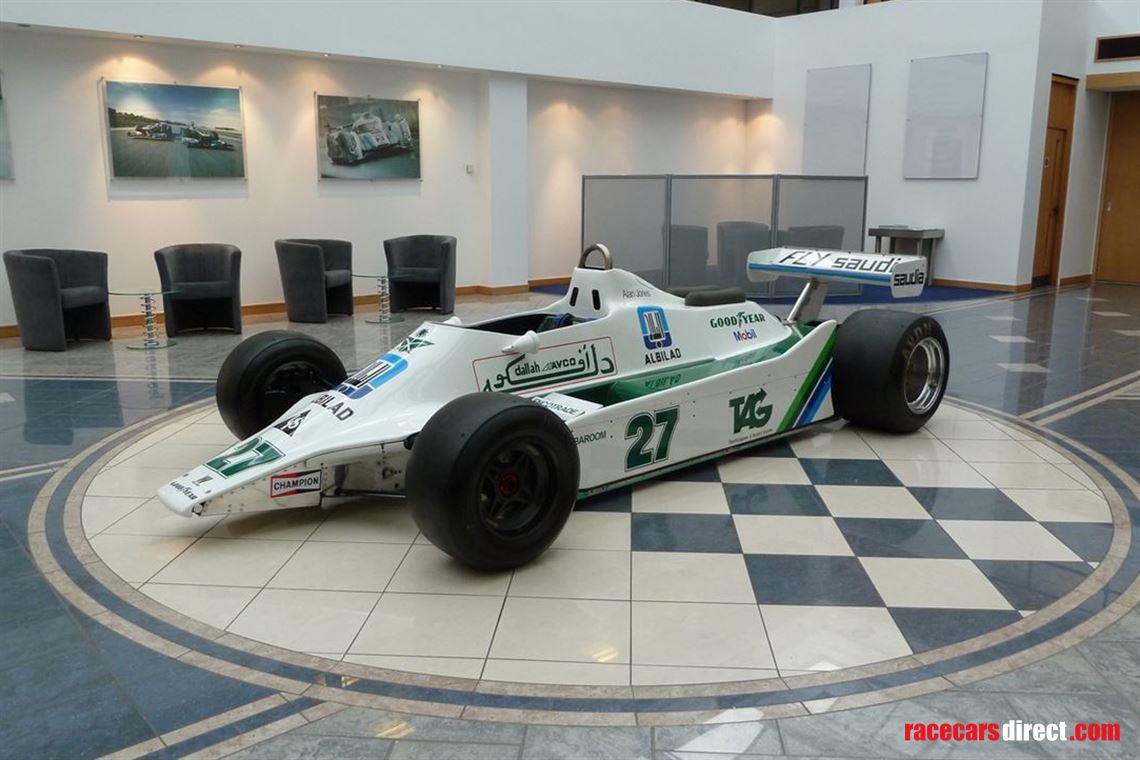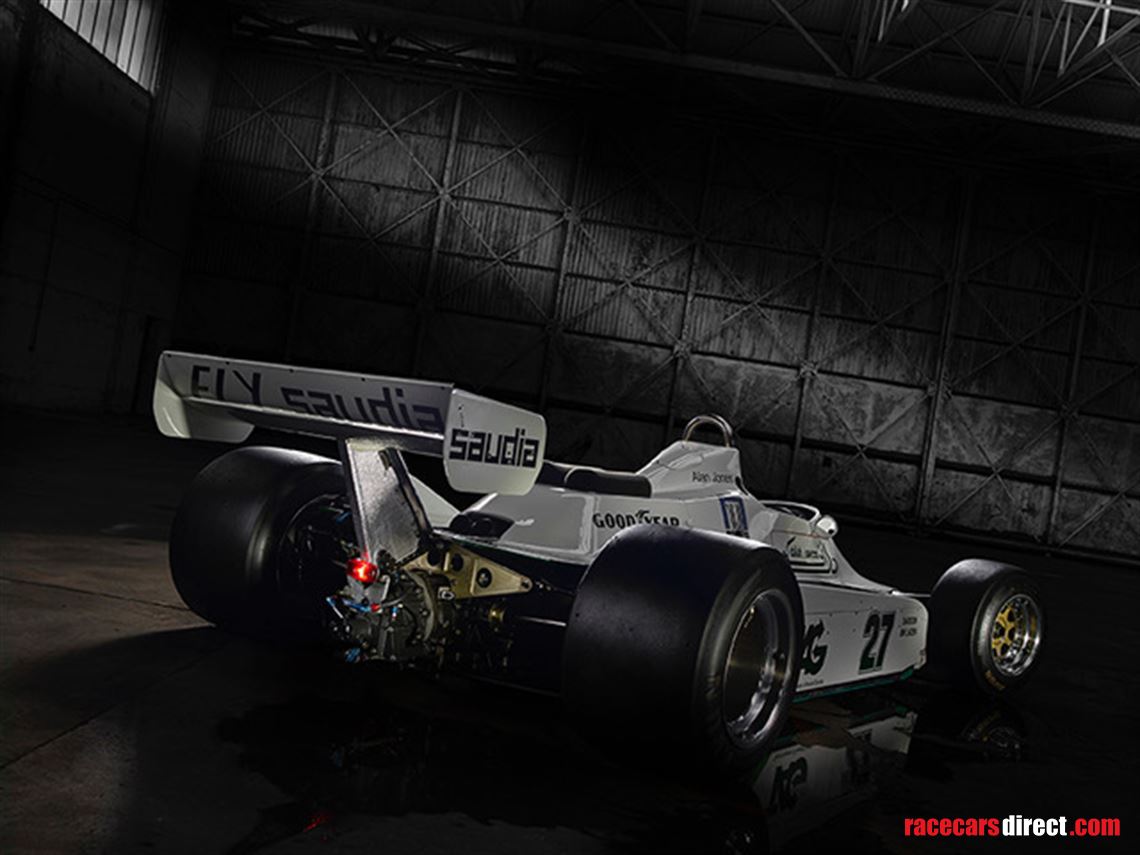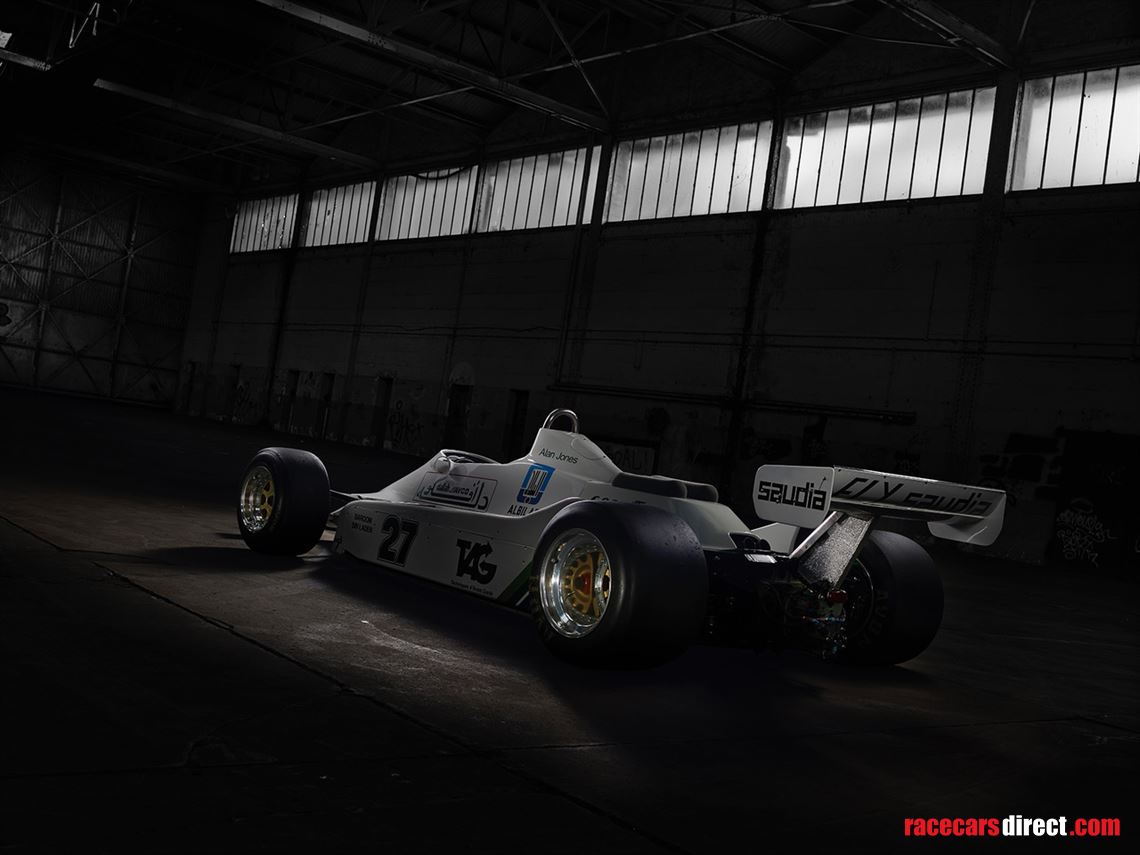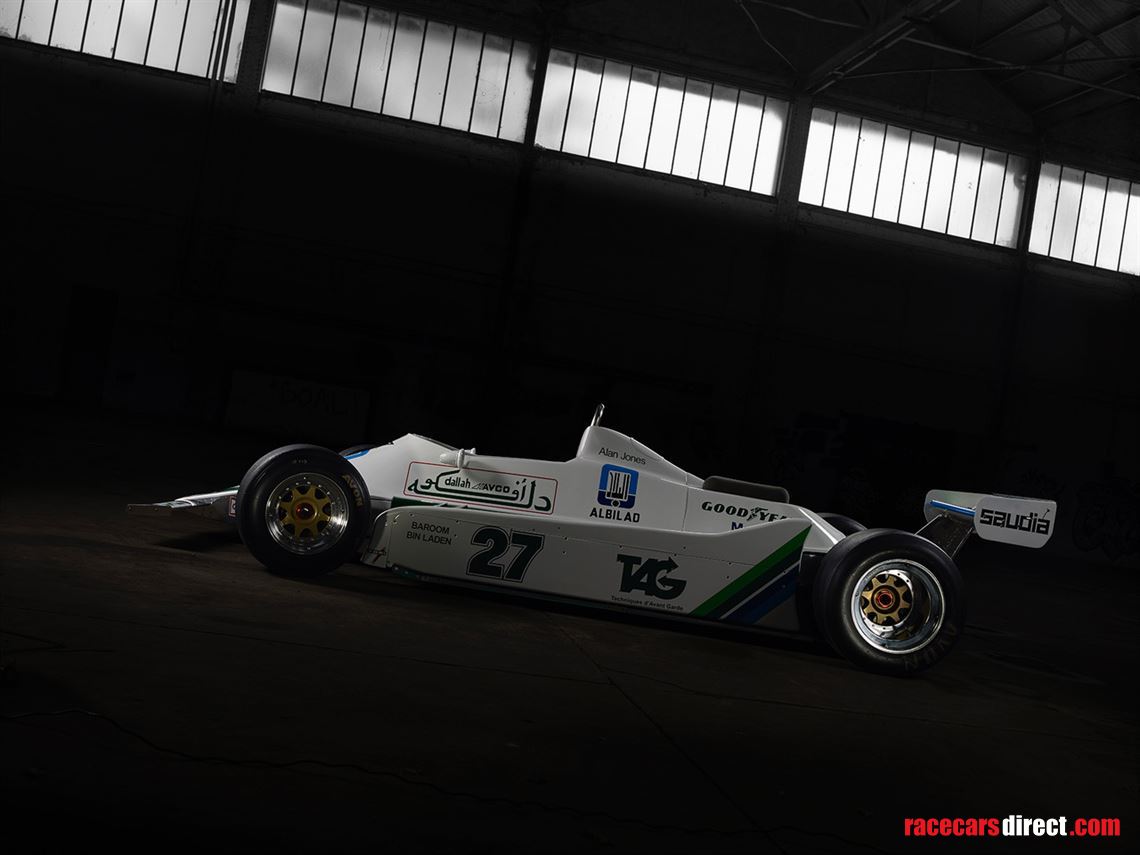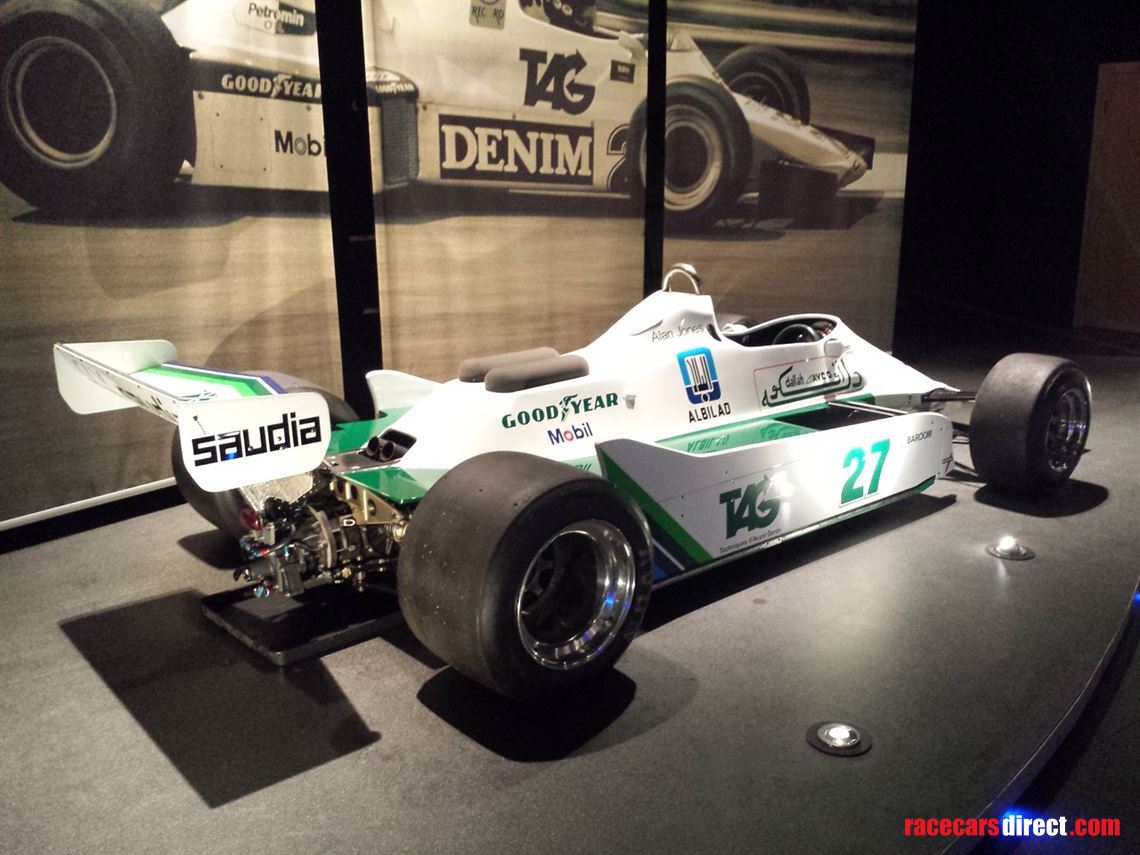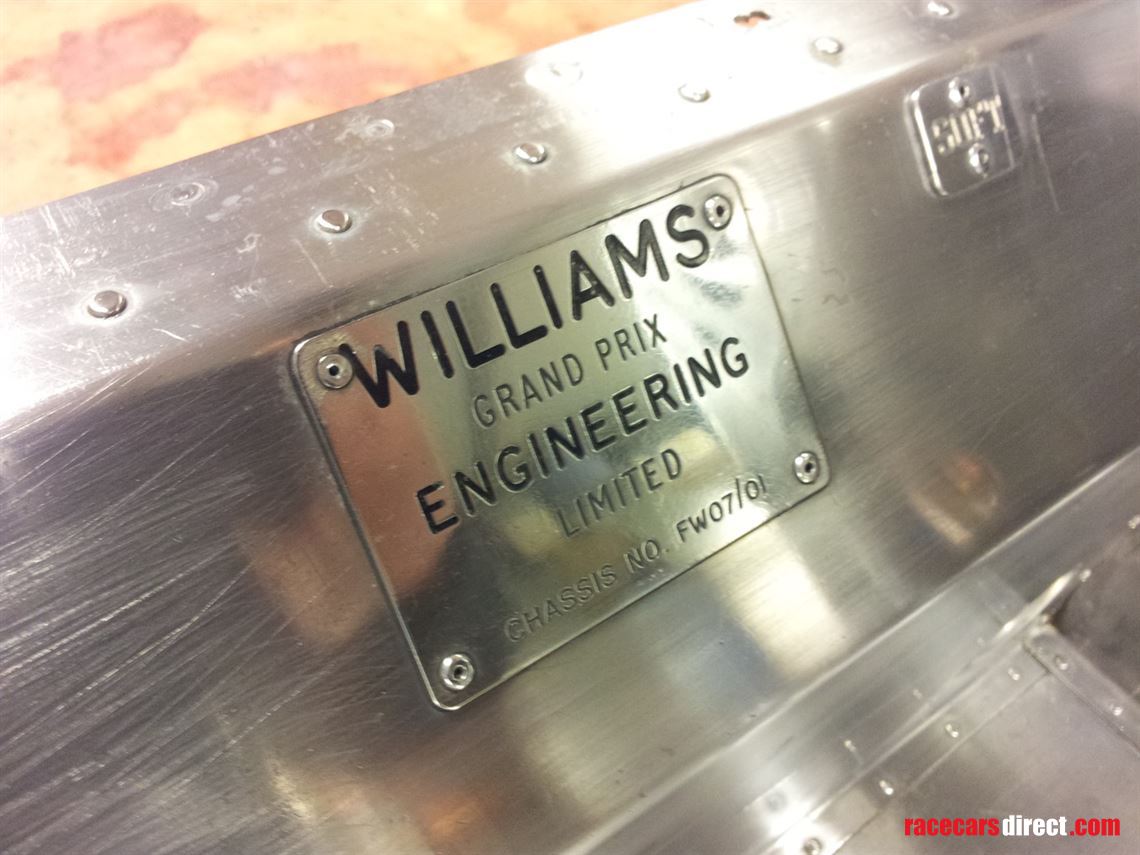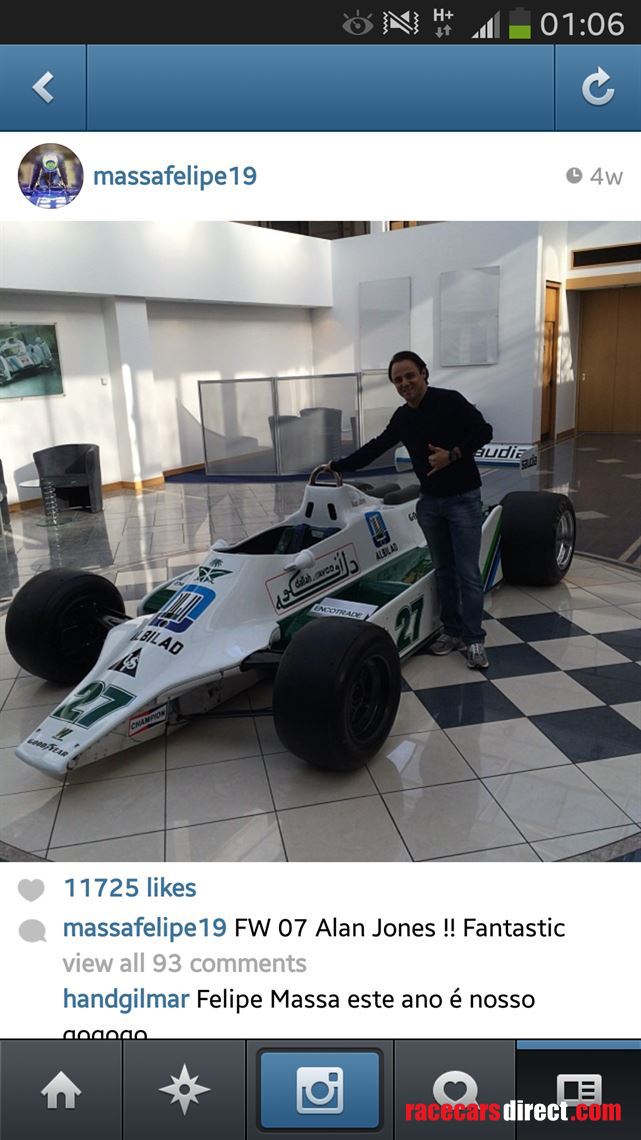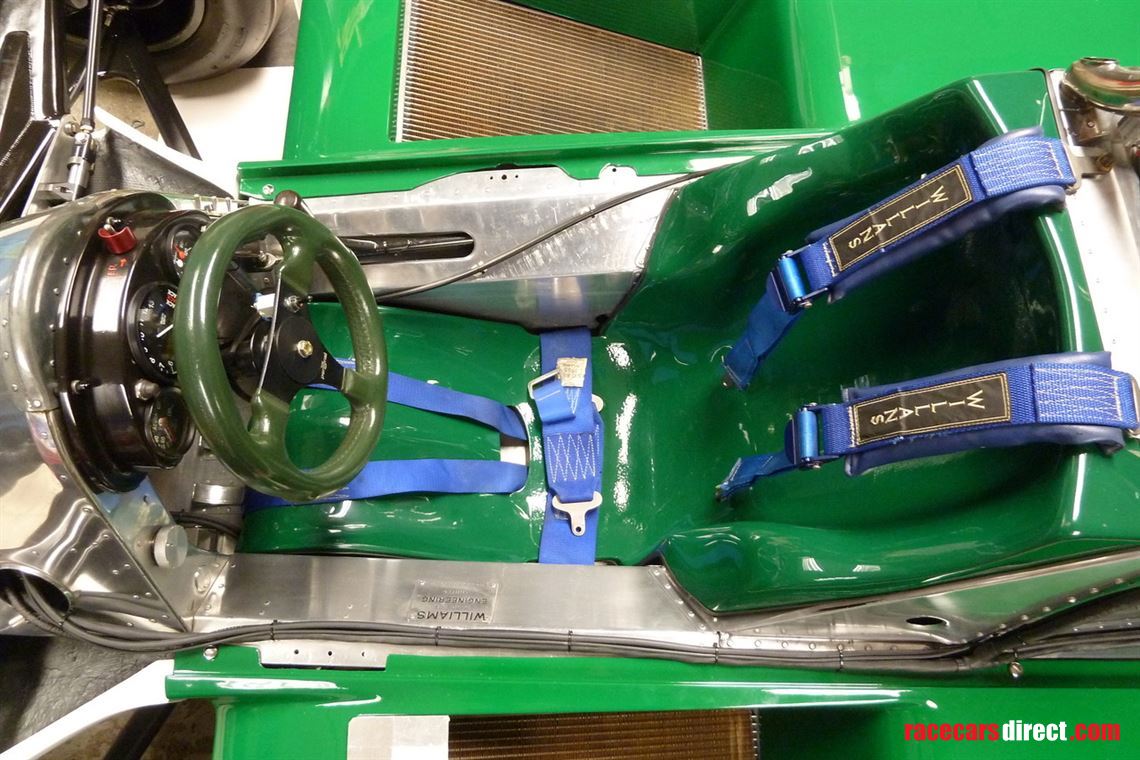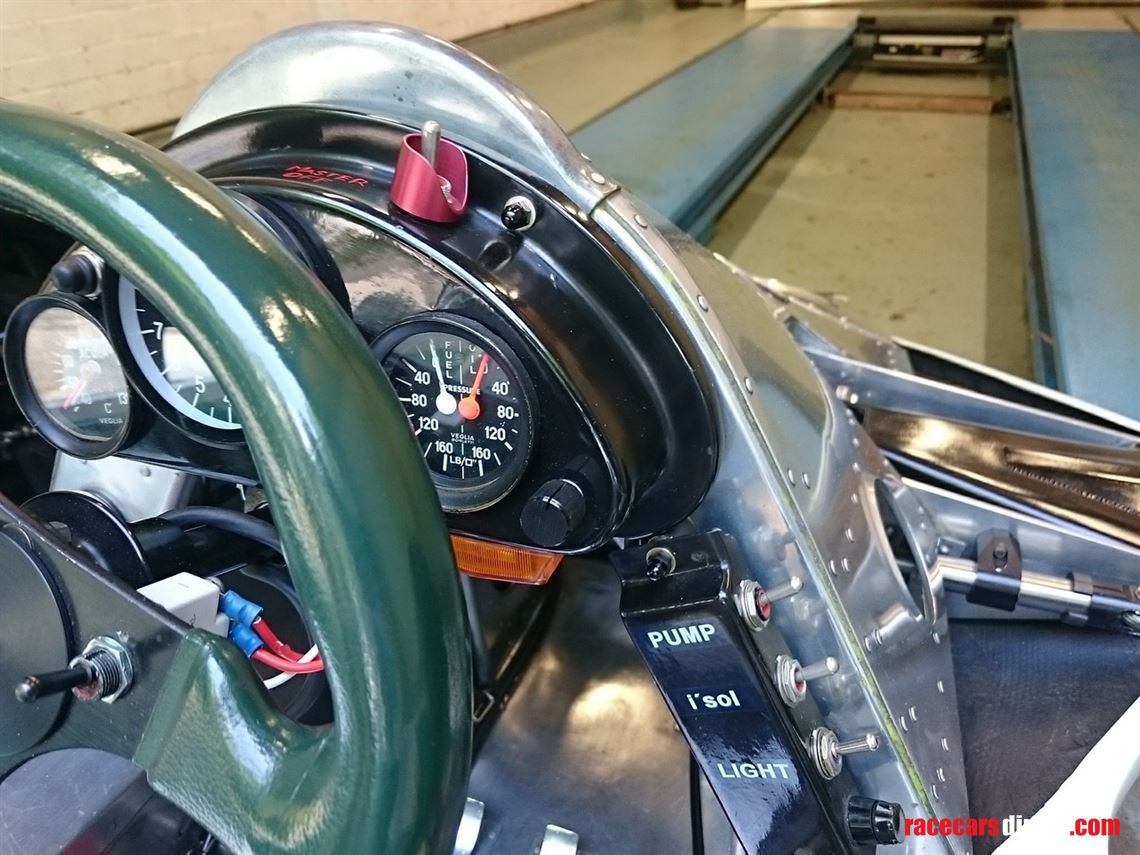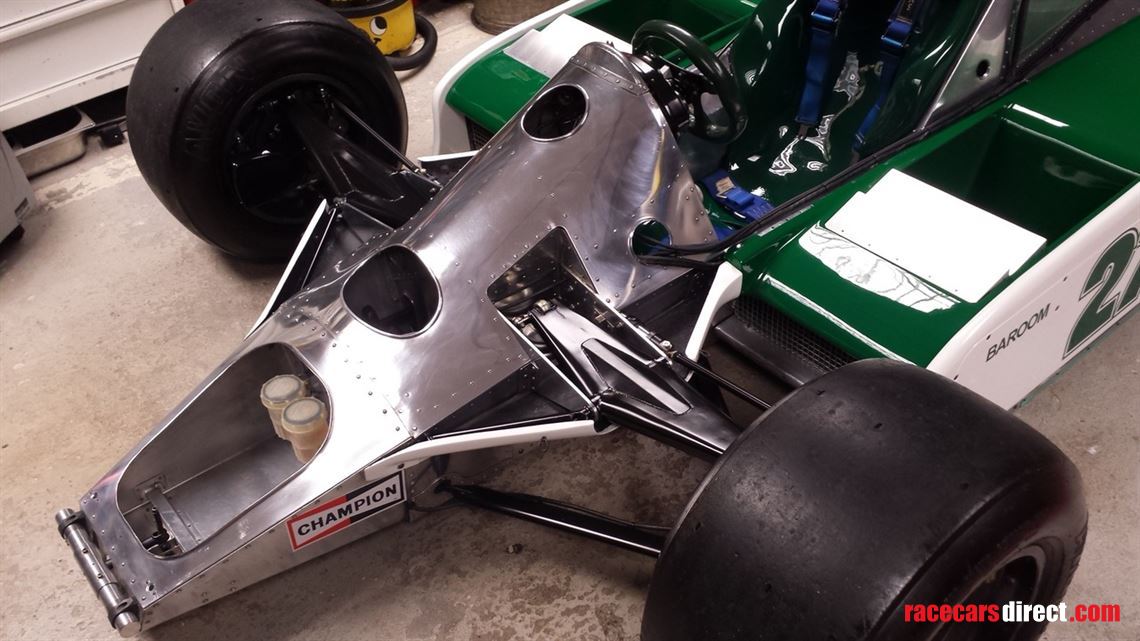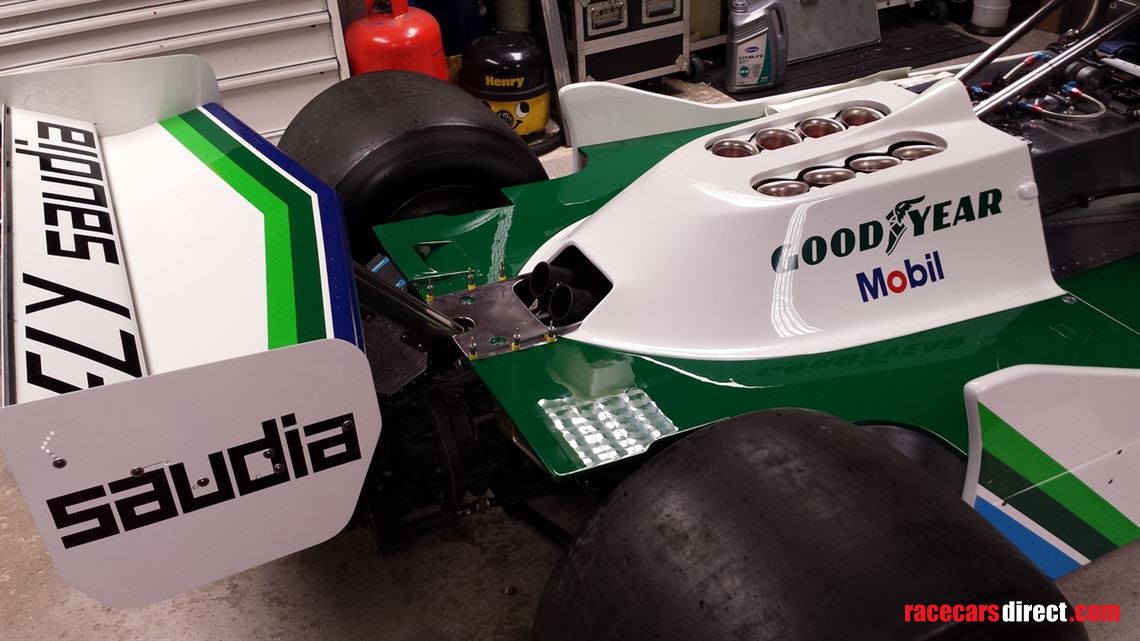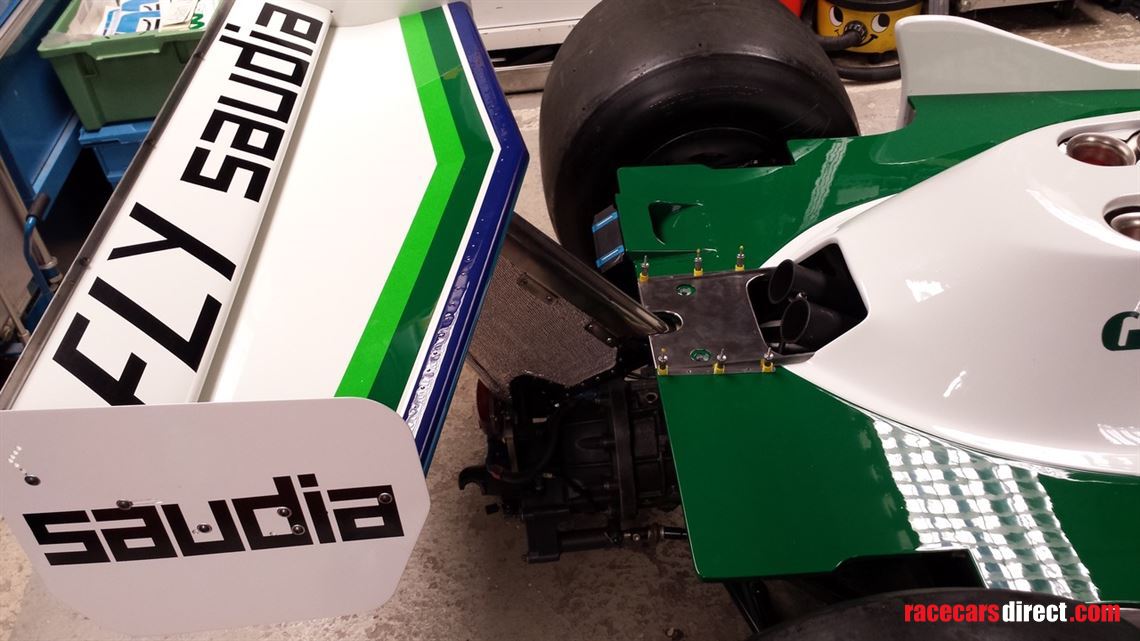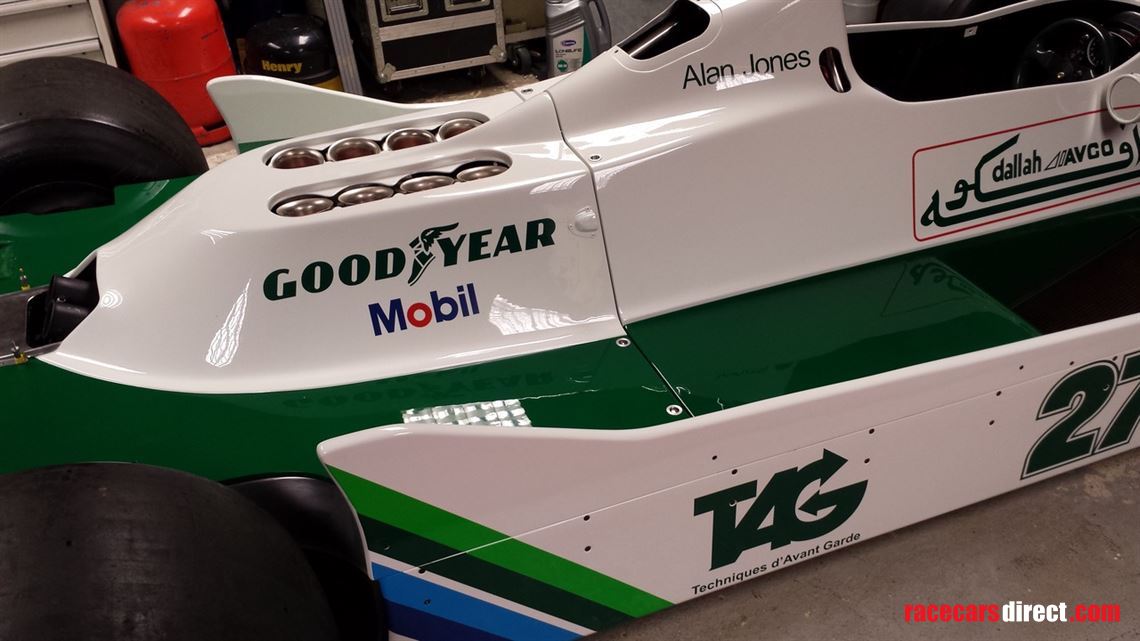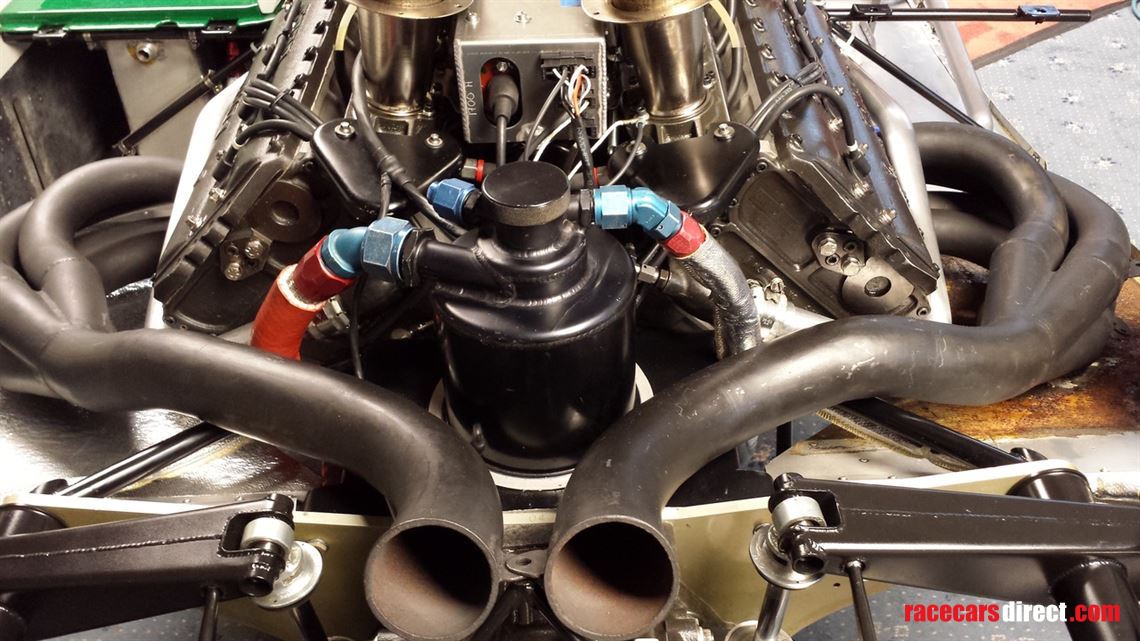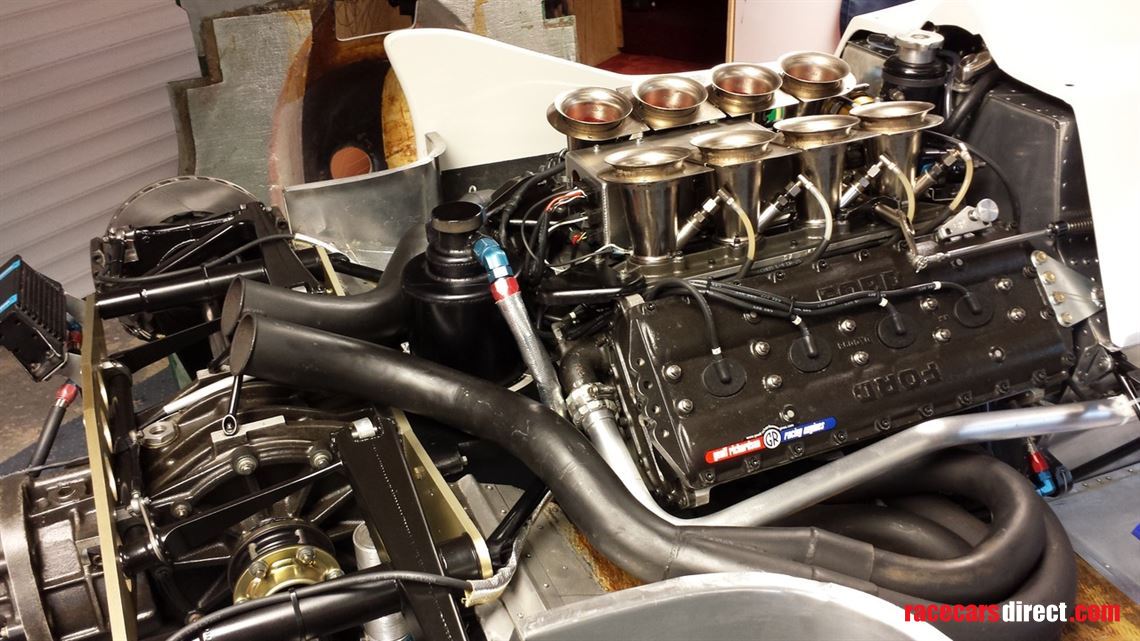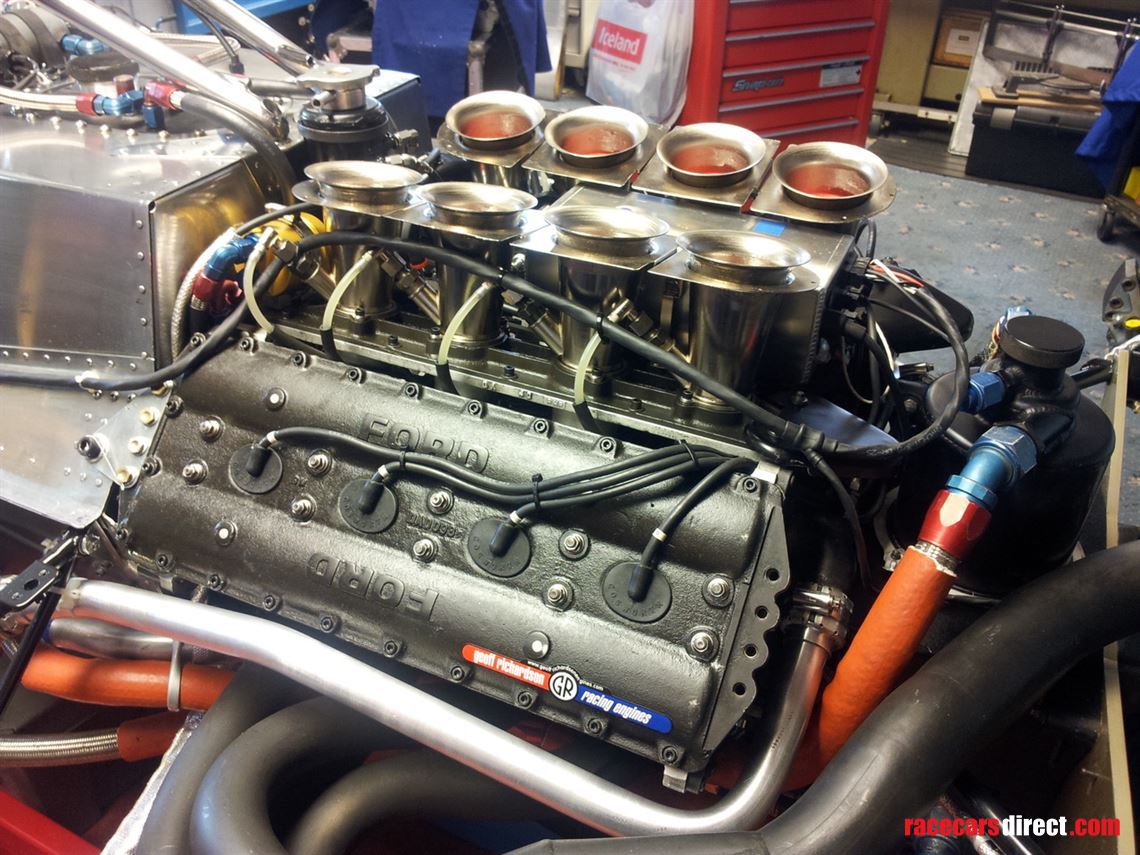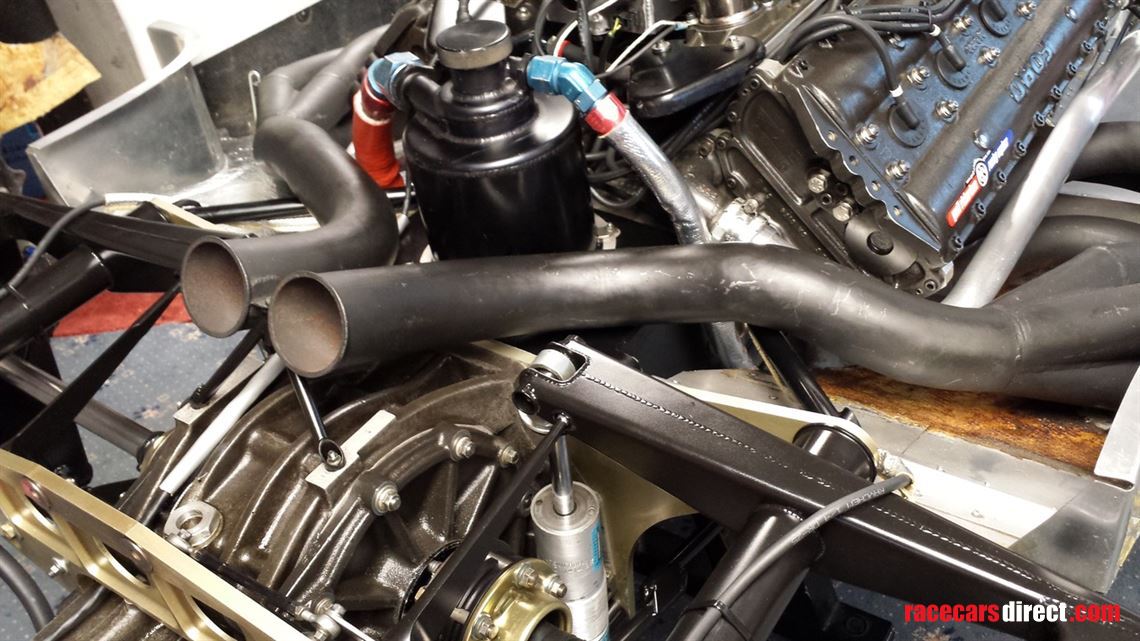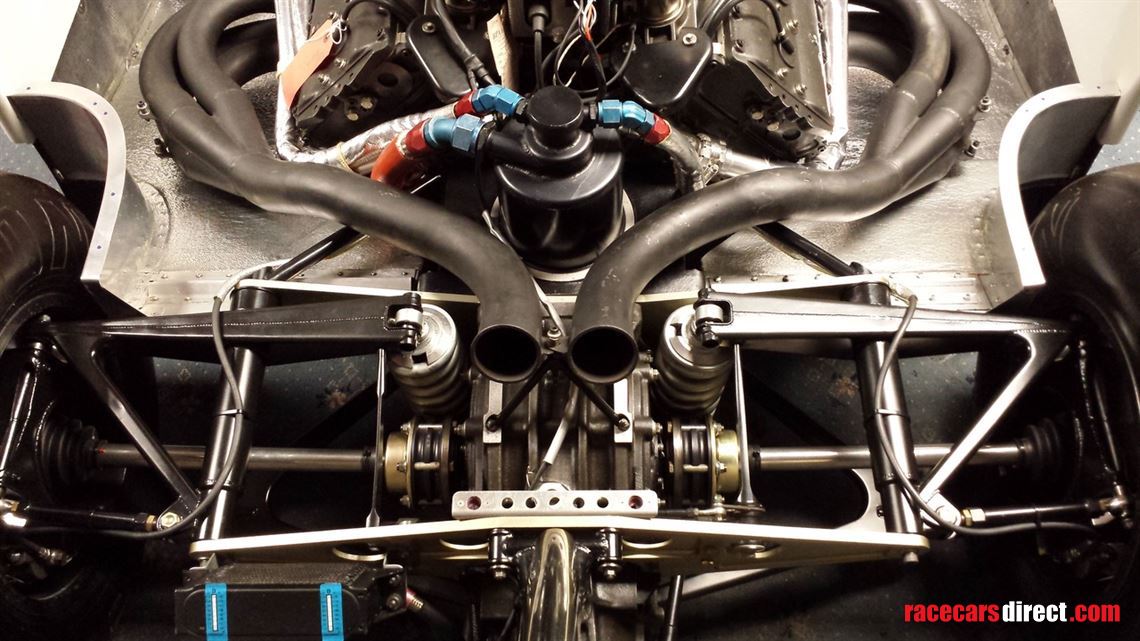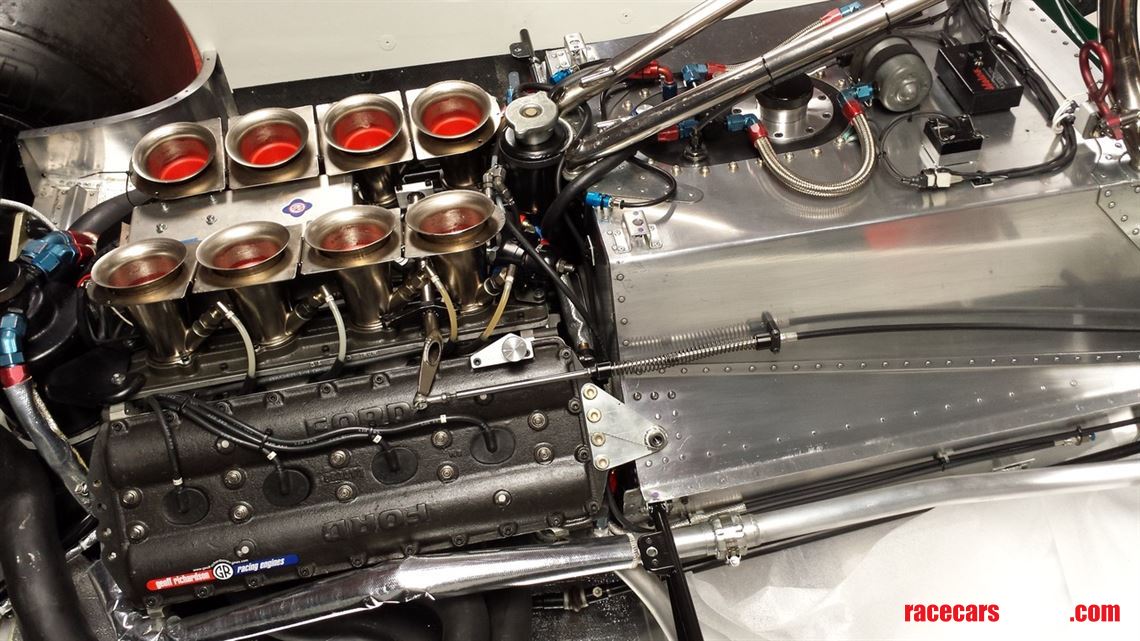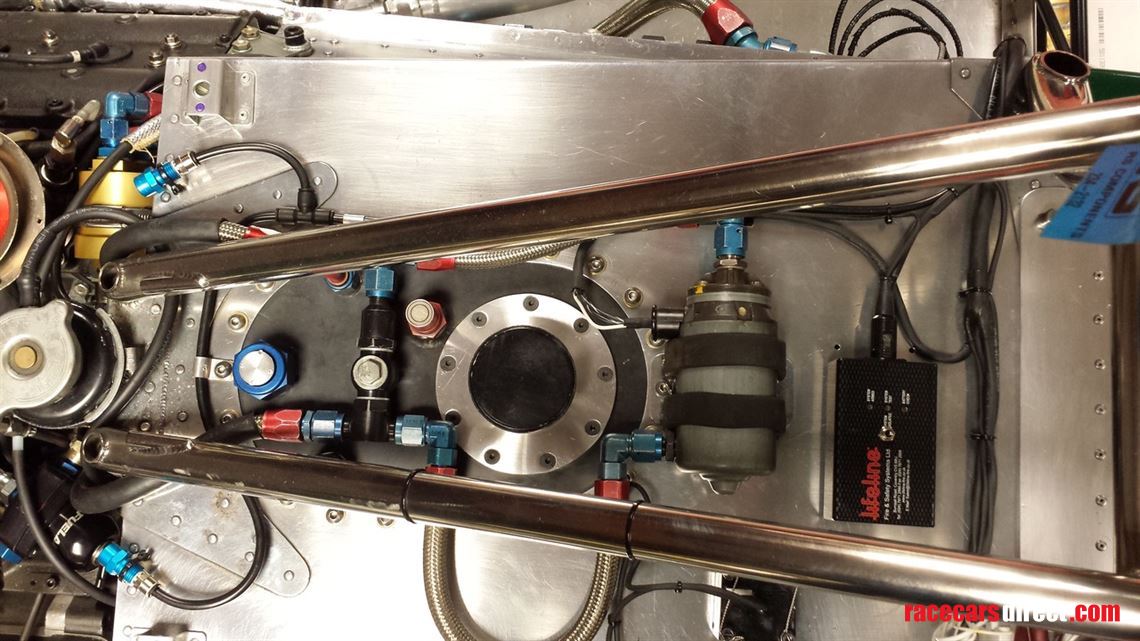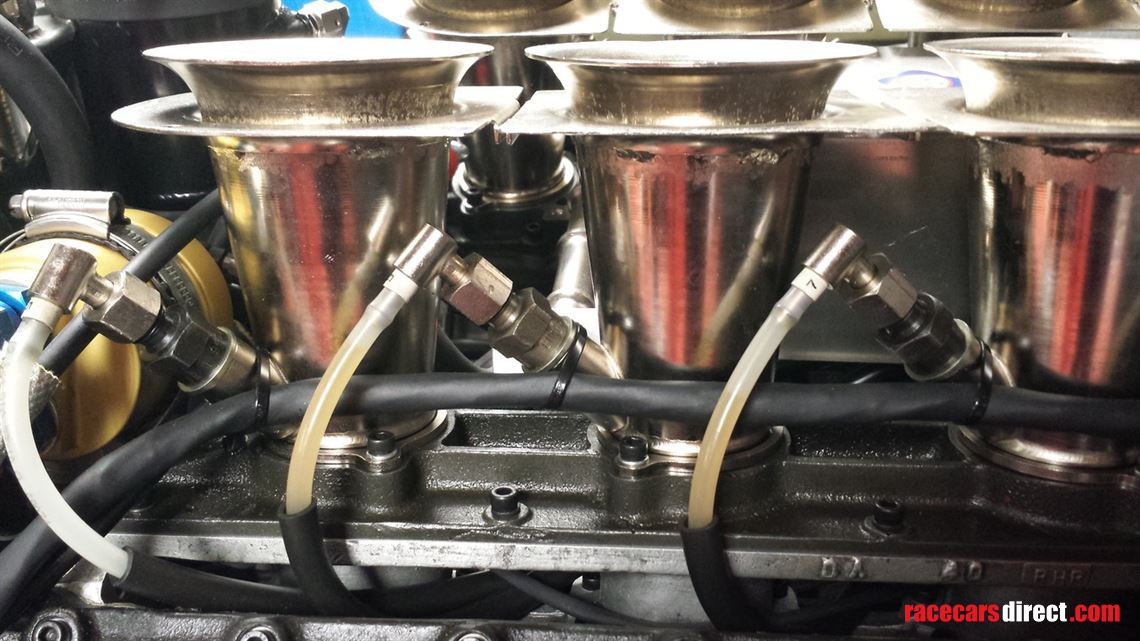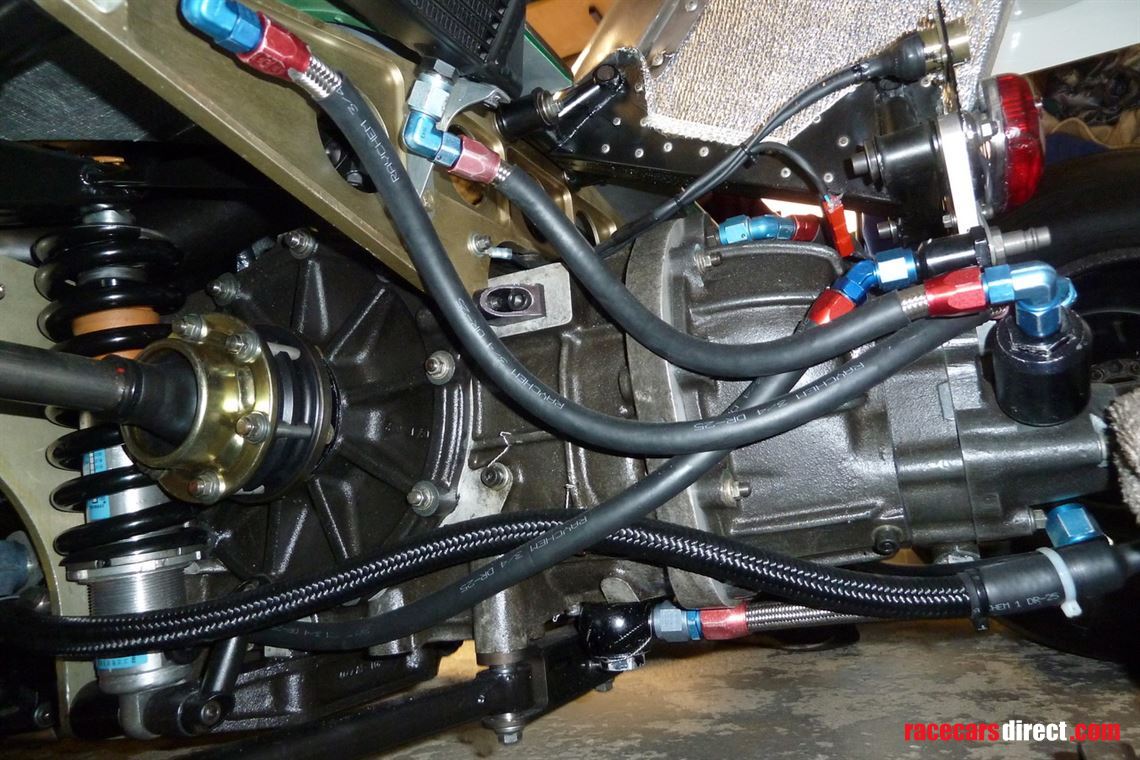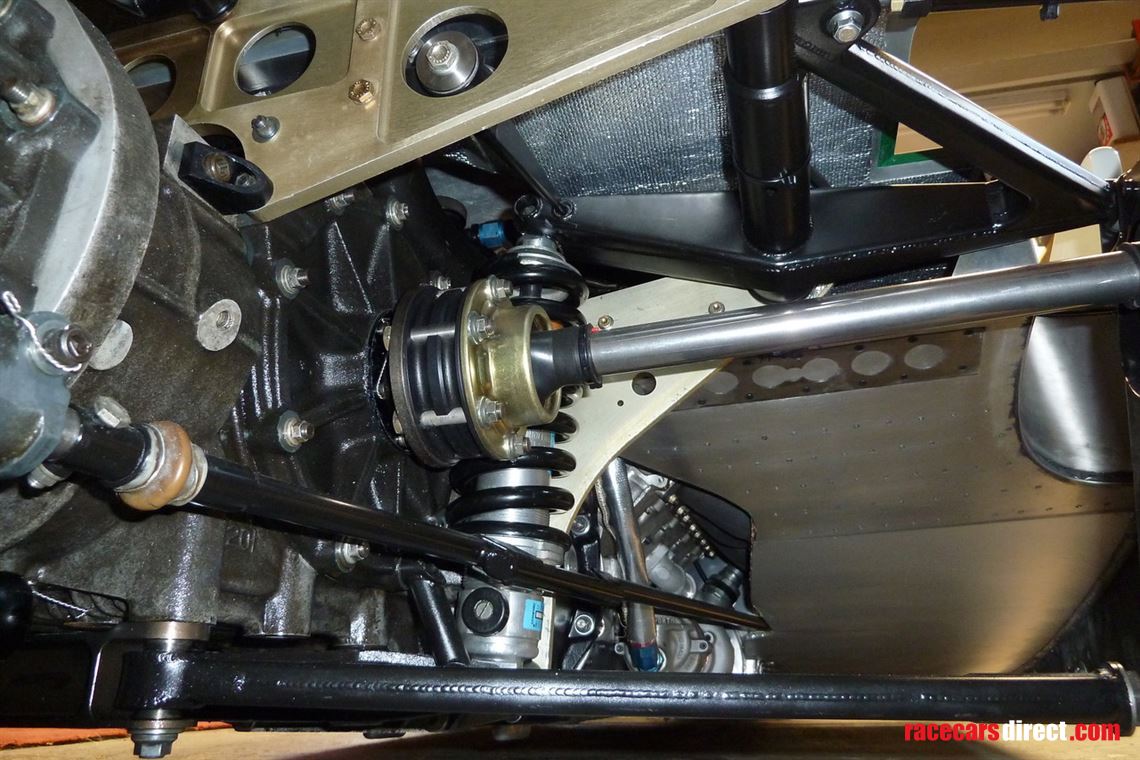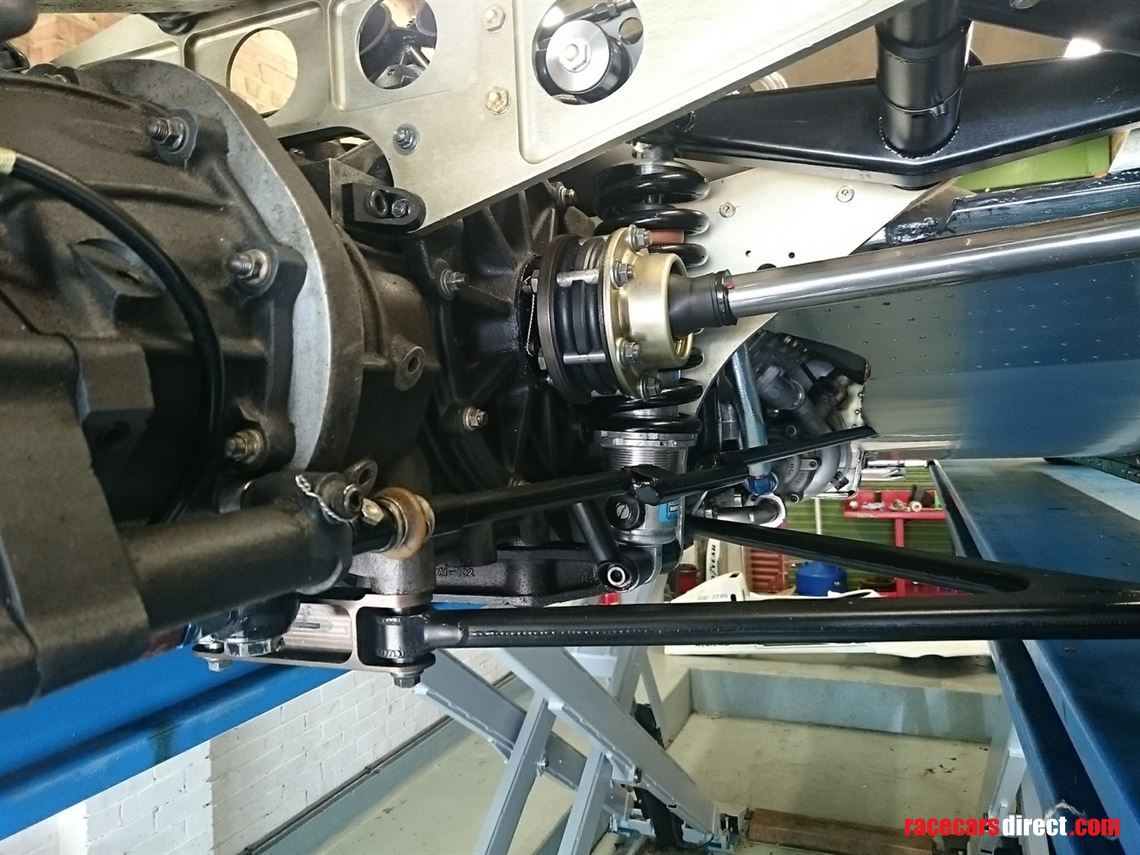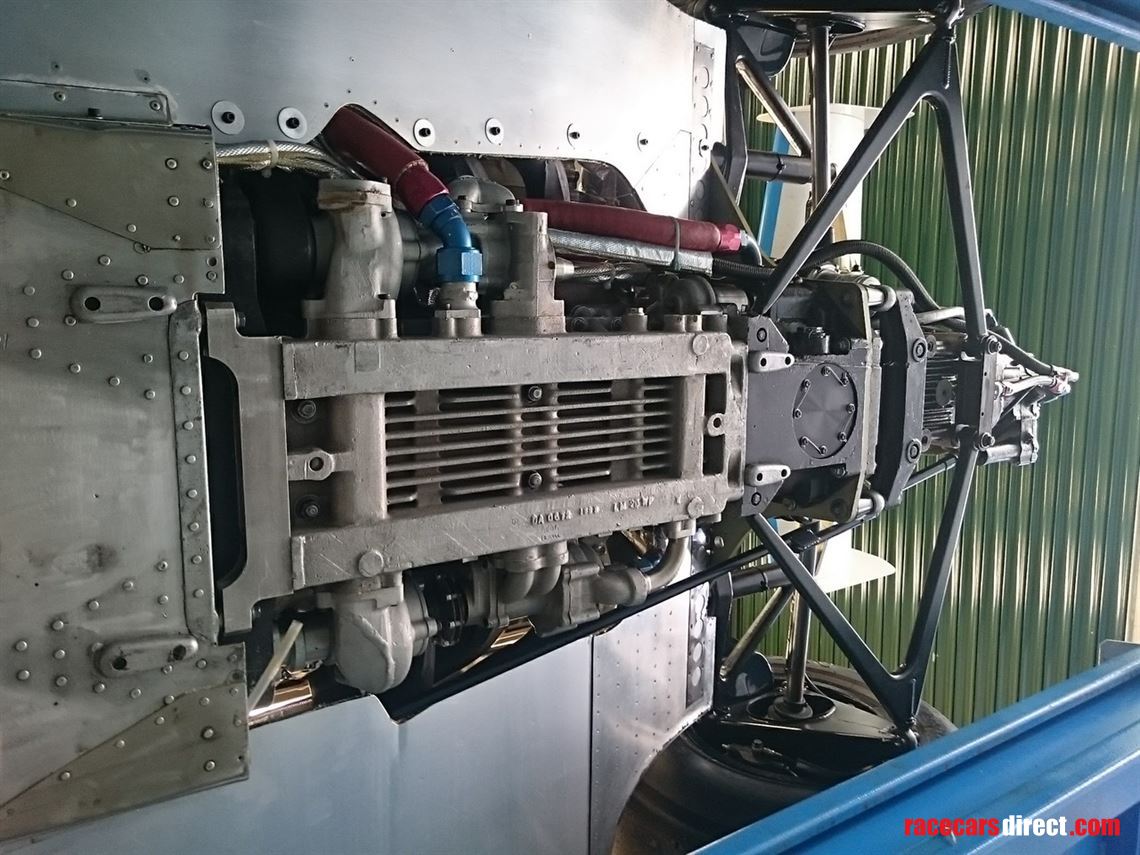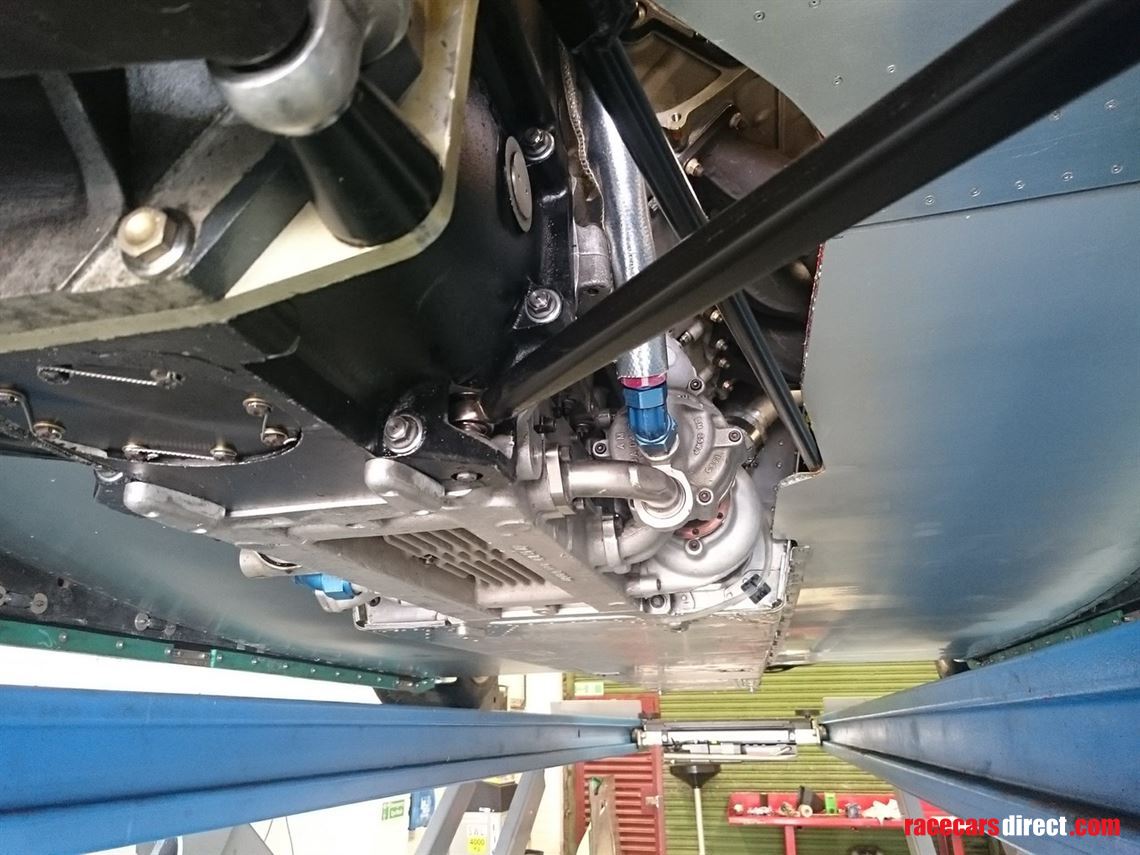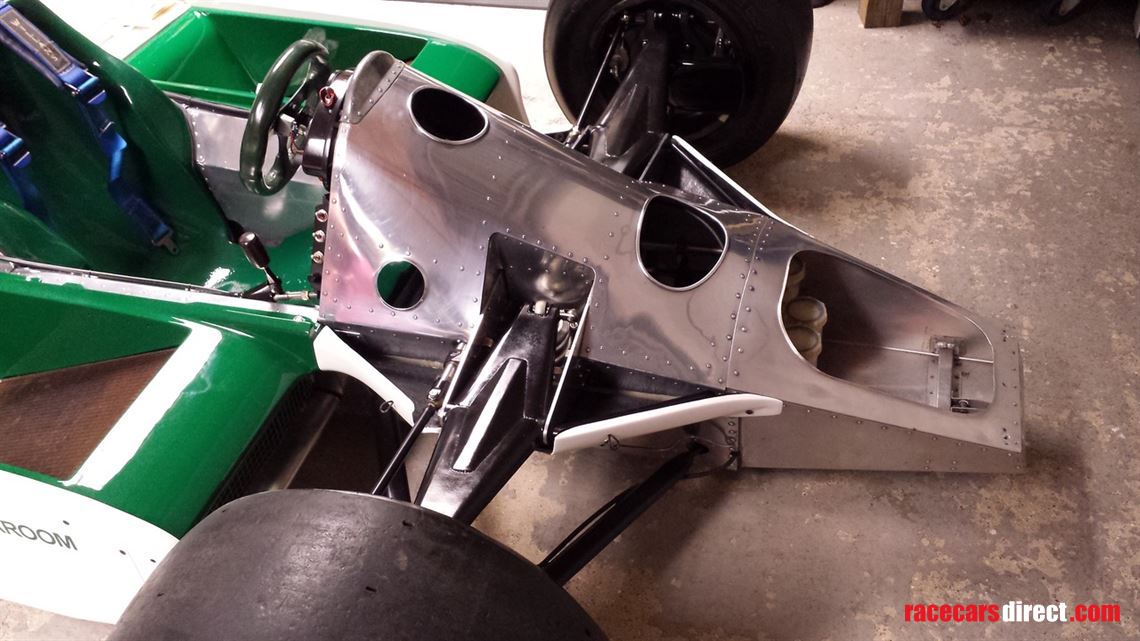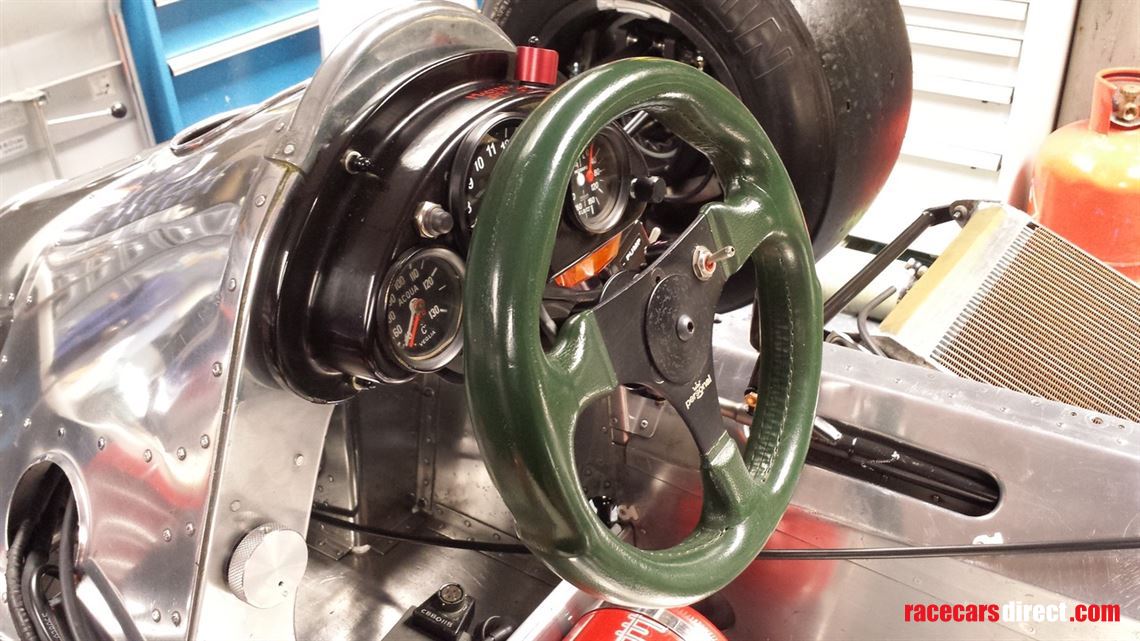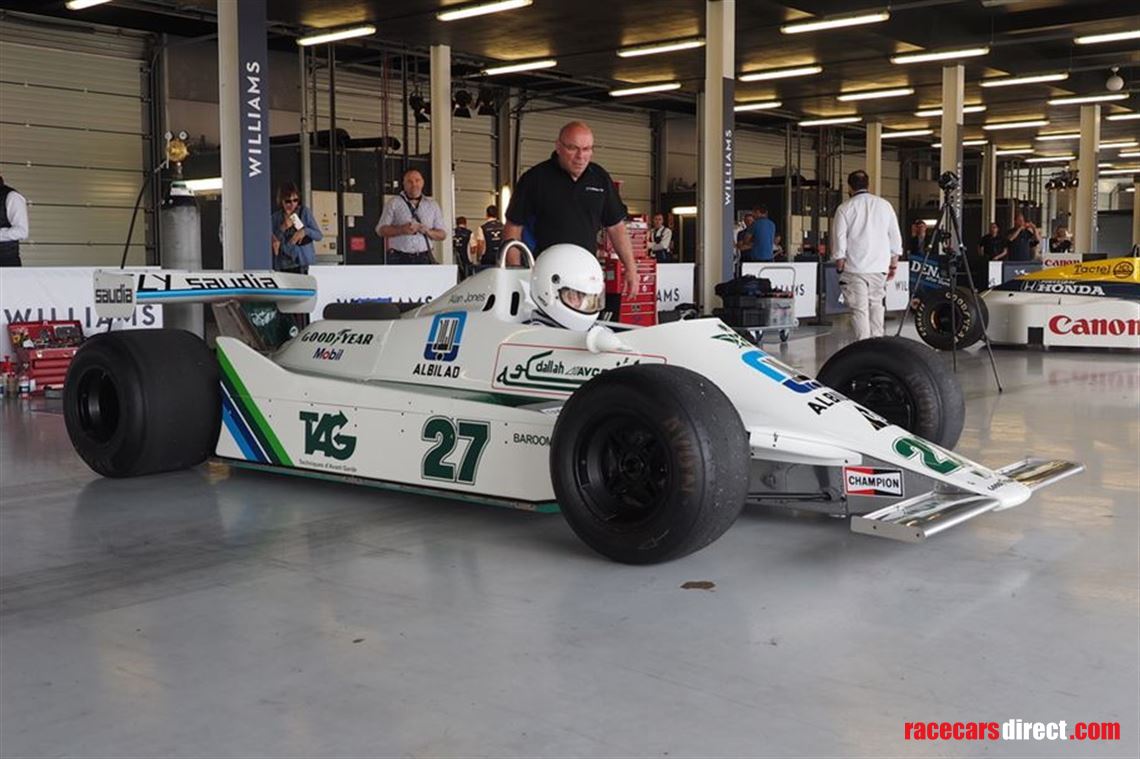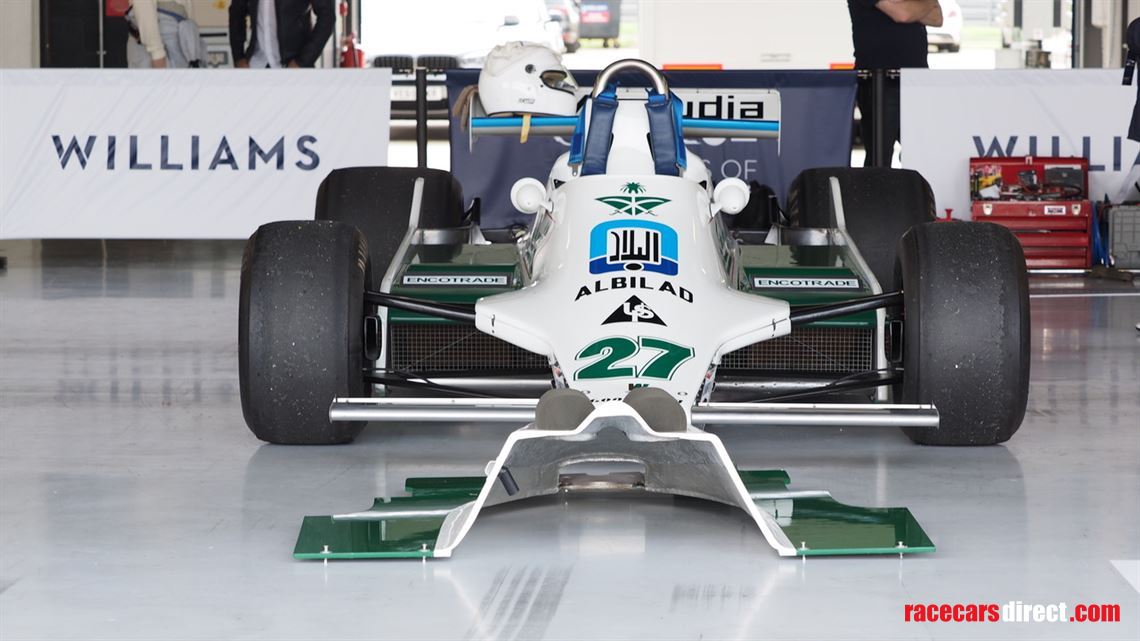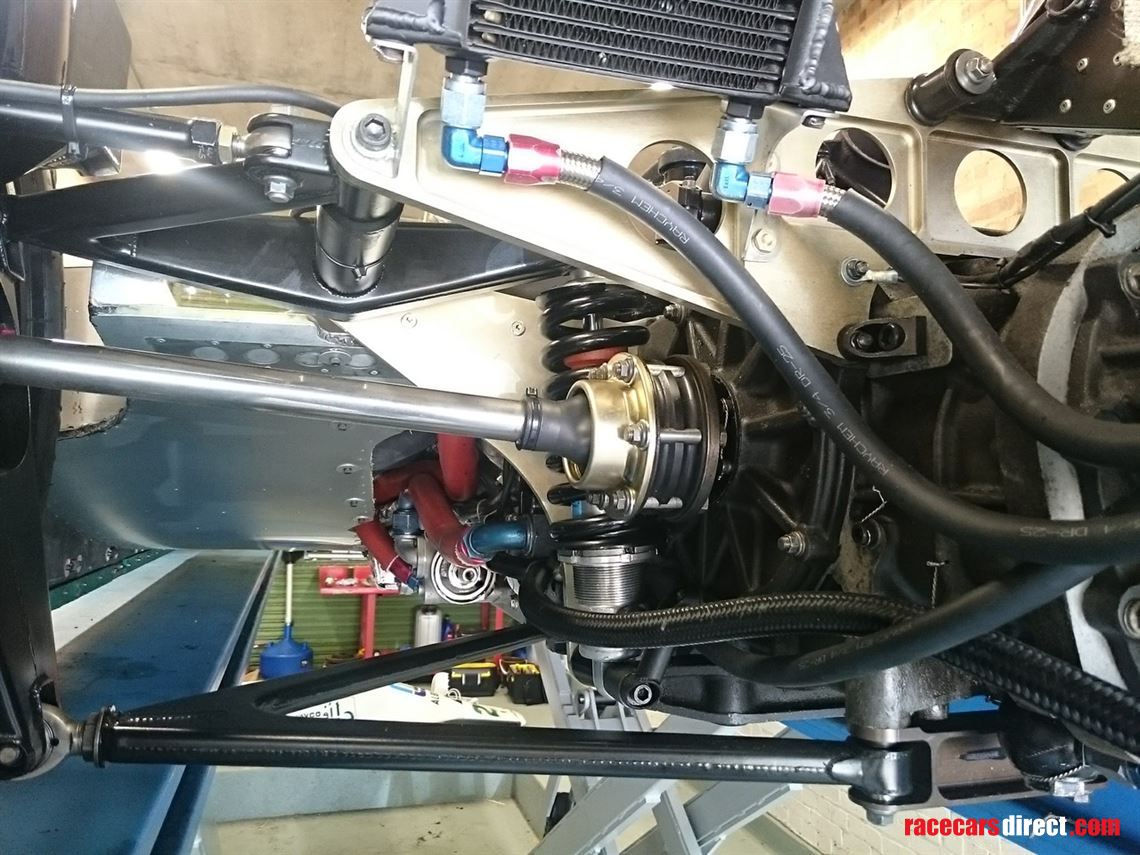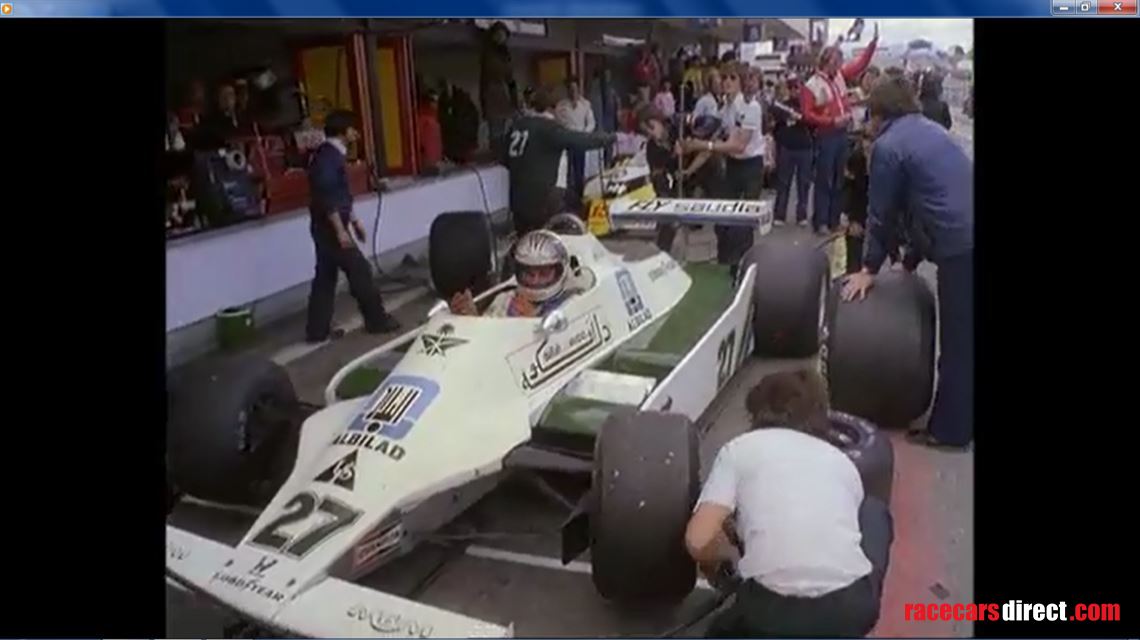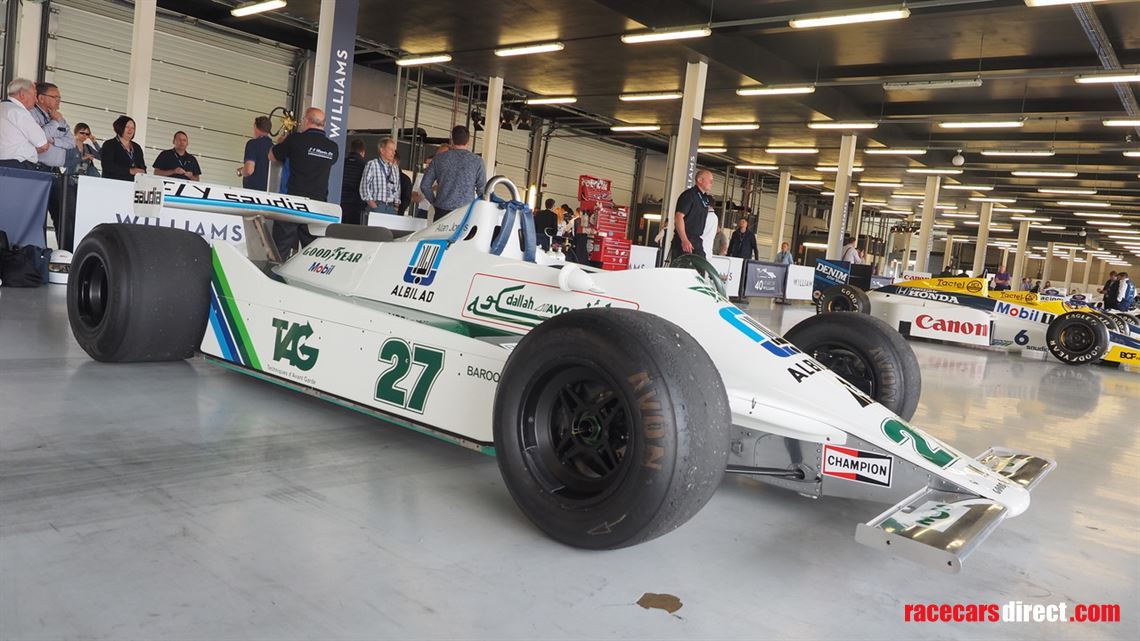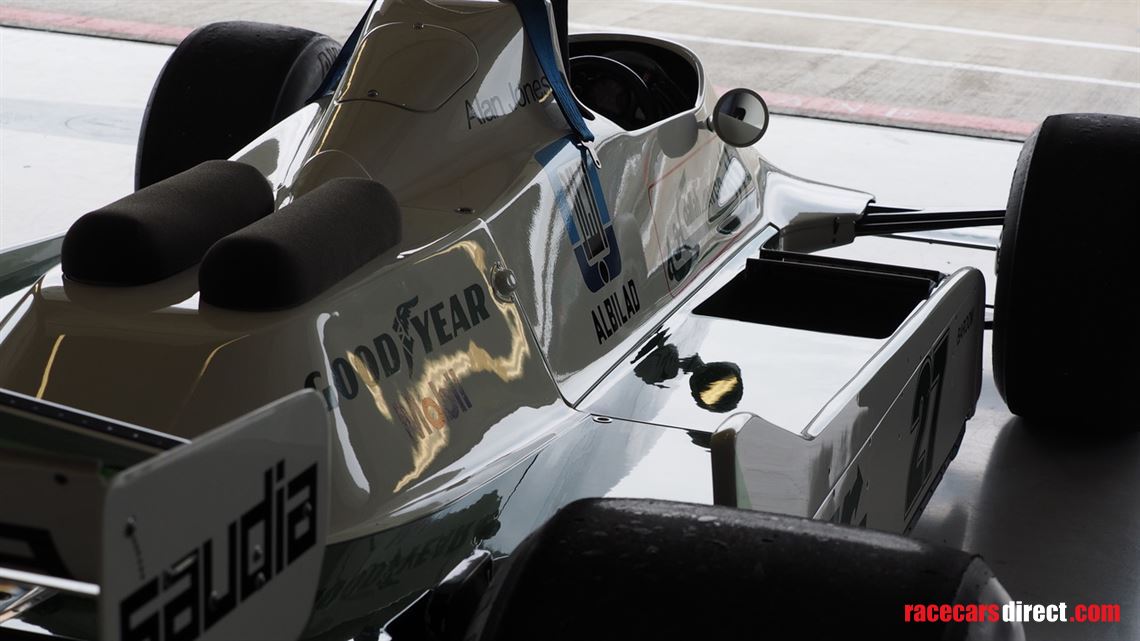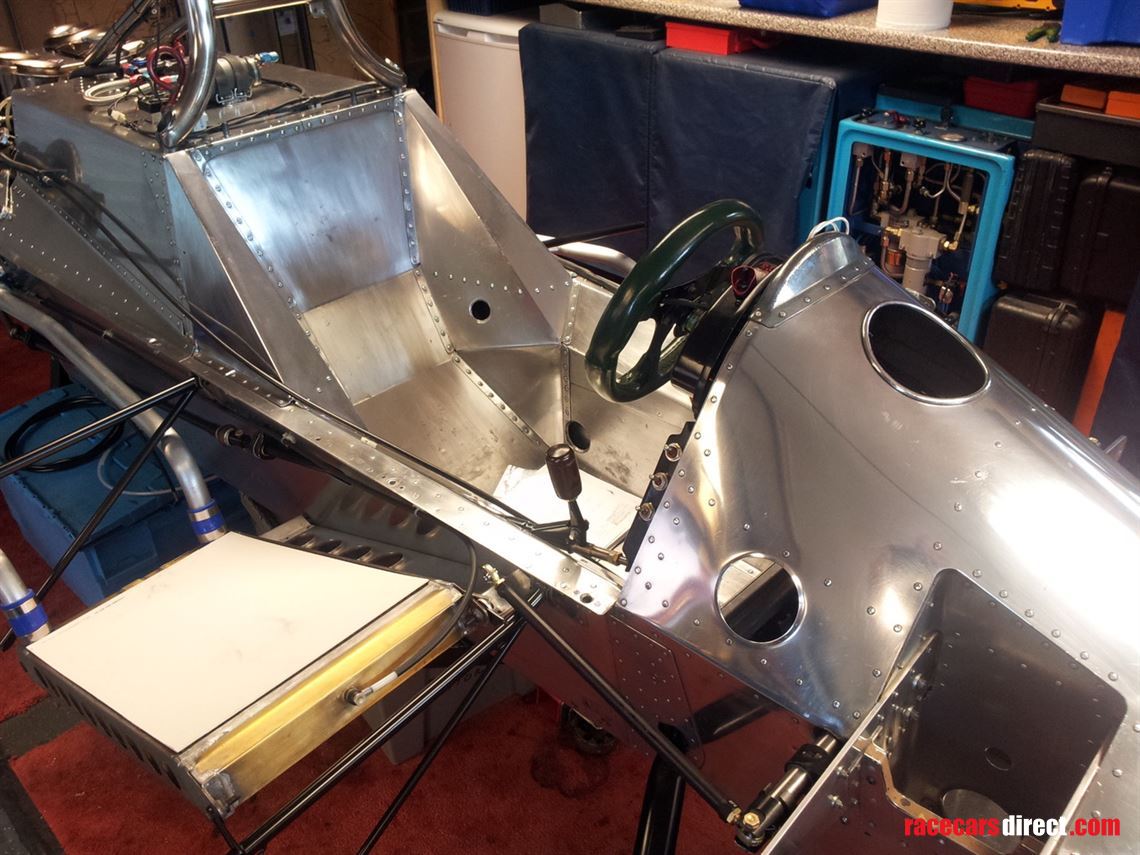Race & Rally Parts

£ POA
1979 Williams F1 Car #27 FW07/01 Dutch GP Winner with Alan Jones - SOLD
This is now SOLD. Search for similar items.
Description:
Williams F1 Formula One Car #27 Chassis No FW07/01. 1979 Dutch GP Winning Car with Alan Jones. The FW07 was Williams Grand Prix Engineering’s first attempt at a ‘ground effect’ car. This example, FW07/01 was raced 8 times during 1979 in the hands of Alan Jones & Clay Regazzoni with Jones claiming victory in the Dutch GP at Zandvoort. FW07/01 went on to race in the 1980 Aurora AFX British F1 Championship with 4 poles & 3 wins. It is now fully restored and ready to be enjoyed back out on track.
Recently inspected for new HTP papers which are due to be issued shortly and the car is available for viewing in Bicester.
ALL ENQUIRES TO MIKE WALTERS PLEASE. +44 (0) 7970 736644 OR EMAIL mike@racecarsdirect.com
The FW07 was Williams Grand Prix Engineering’s first attempt at a ‘ground effect’ car. Following on from the success of the Lotus 79 Patrick Head, the teams Chief Engineer since its formation in 1977, along with Neil Oatley and Frank Dernie took these aerodynamic principles and with the help of a wind tunnel at Imperial College (London) set about honing his design for what would become the FW07. It was the FW07 that would ultimately propel Williams into a championship winning team in only its second season since the cars debut. Between its first race in April 1979 at the Spanish GP until its last outing at the USA GP (West) in April 1982 the FW07, and its subsequent ‘B’ and ‘C’ adaptations, scored an incredible 300 points, securing Williams its first Drivers Championship and first two Constructors Championship’s.
The car you see here is #27 Chassis No FW07/01. It first debuted in April 1979 at the USA GP (West) in Long Beach although it did not take part in the race but remained on static display. During the next race of the 1979 calendar, the Spanish GP at Jamara, the car finally had its maiden outing driven by Australian Alan Jones. Unfortunately a gear selection problem forced a retirement on lap 54 although Jones did record the second fastest lap of the race. By the Belgium GP that year, the sixth race of the calendar, the FW07’s were a front running car. By lap 24, with Jones driving, the FW07/01 took the lead of the race for the first time and held onto it until lap 39, at which point Jones had to retire after suffering an electrical fault. This was the first time a Williams constructed car had led a GP. Piers Courage had done the same in 1969 at the Italian GP but at the time was driving a Williams entered Brabham. It took three further races for Williams to secure its first race win.
On 14 July 1979, at the British GP held at Silverstone, Swiss driver Clay Regazzoni, in the sister car the FW07/02, was victorious after Jones had to retire following a water pump failure. With updates to the FW07 becoming available Jones was due to race the newer chassis, the FW07/03, with the FW07/01 car available as a spare. Having spun off at Copse during the Thursday morning test session Jones switched to the spare car. During the afternoon timed session Jones continued in the FW07/01 whilst the team checked over his race car, during which time Jones recorded an average speed of 146.8mph and recorded the first sub 1m 12s lap with a time of 1m 11.88s. This lap was over six seconds faster than the previous year’s fastest lap, held by Nikki Lauda in his Brabham-Alfa Romeo. On the Friday morning Jones returned to his race car but during a brief halt in the session, after Patrese crashed his Arrows at Becketts, switched back to the FW07/01. During the Saturday morning test session Jones decided to settle for the FW07/01 as his race car having decided that out of the two available to him this one was running well and had the better engine following the installation of a new Cosworth DFV V8 for the occasion.
Having qualified in pole-position, in the process setting a lap record, and after building up a commanding lead in the race during which time by lap 25 the FW07/01 had lapped nine other cars, it was a disappointing end for Jones during what was a glorious weekend for the team when a water pump failure forced him to retire the car on lap 40 after leading the GP from the start.
Two races later however, at the Dutch GP in Zandvoort, Jones and the FW07/01 finally secured the victory they so richly deserved. Like Silverstone Jones alternated between the race car and the spare, which was again the FW07/01. During Friday’s timed session Jones was out in the spare car and this continued through to the first session of the following morning. By the afternoon timed session Jones was back in his race car with Regazzoni in the FW07/02. Jones would eventually put his car on the front row of the grid behind Arnoux who was in pole-position in the Renault. However even though Jones had a new engine in the FW07/04 the team were concerned with its performance and, with an hour to go before the race, as a precaution switched Jones back to the FW07/01. It was an eventful race for Williams. Regazzoni tangled with Arnoux in a first corner incident and subsequently lost his front wheel and by half distance, even with a gear box issue, Jones was managing to stay behind race leader Villeneuve. On lap 47 Villeneuve spun his Ferrari allowing Jones to take over the lead of the race which he held until the chequered flag with 20 seconds to spare over second place Scheckter in the second Ferrari. This victory, the first for the FW07/01, and a hat-trick for Jones secured Williams their fourth consecutive win following Regazzoni’s win at Silverstone and Jones following this up with wins in Germany and Austria.
In all FW07/01 went on to race eight times during the 1979 season and helped secure third place for Jones in the Drivers Championship and fifth place for Regazzoni, each driving the car four times. Williams also finished a highly commendable second to Ferrari in the Constructors Championship an achievement made all the more worthy considering this was the FW07’s maiden year.
Since being retired from GP racing the FW07/01 went on to successfully race in the 1980 Aurora AFX British F1 Championship. During this time the FW07/01 achieved four pole-positions and three victories, with Eliseo Salazar and Emilio de Villota securing two and one wins respectively. After this stint in the Aurora series and other various race outings the FW07/01 was exhibited as part of the Williams Grand Prix Collection, home to one of the largest private collection of Formula 1 cars in the world. FW07/01, along with its sister car FW07/02, took pride of place in a collection that spans the entire history of the Williams Formula 1 team.
In 2013/2014 the car underwent a complete ground up restoration by John Cadd of JC Historics. John started his race career at Williams in 1979 coincidentally at the same time that the FW07/01 made its debut. He was initially part of the test team and subsequently formed part of the race team. John continued this role until he took over custodianship of the Williams Grand Prix Collection which he continued to do so for the next ten years. The restoration project took over 1000 man hours and painstakingly restored the FW07/01 as close to original spec as is possible, in some cases with original Williams parts. When original parts were not available replacement items were manufactured to the highest racing standards using original drawings or templates. [Thanks to Jonathan Williams and Dickie Stanford at Williams Heritage for their invaluable input into this project]. Both engine and gear box have been completely rebuilt by specialists Geoff Richardson Engineering and BPA Engineering Ltd and the car now wears the livery that it ran with when Alan Jones and the FW07/01 won their first race together at Zandvoort in 1979.
Now fully restored and powered by the ubiquitous Ford sponsored Cosworth DFV (V8) engine the #27 FW07/01 is back on the track where it belongs so that others can admire this truly historic car as was the case over three decades ago.
On 02 June 2017 the FW07/01 was invited to Silverstone to mark 40 Year of Williams. In front of over 50,000 spectators the FW07/01 lined up alongside other iconic cars from the team’s Formula 1 history. Starting with Williams first car, the Patrick Neve March 761/7 followed by the FW06 and the FW07, this car being one of two 07’s invited to take part in the event, and culminating in the Massa/Stroll 2017 FW40 some 18 cars in all lined up in The Wing paddock. On a day where the FW07/01 took to the track alongside cars such the 6 wheeled FW08B, Mansell’s 1992 Championship winning FW14B and the FW40, the FW07/01 rightly took its place as part of the unique heritage that only a team like Williams can offer. [Thanks to Jonathan Williams and Williams Heritage]
Long Beach, April 8 1979 Static Display
Jarama, April 29 1979
Driver: Alan Jones [Australia]
Qualified: 13th - 1m 16s
Result: Retired [Gear Selection]
Zolder, May 13 1979
Driver: Alan Jones [Australia]
Qualified: 4th - 1m 21s
Result: Retired [Electrics]; Led GP
Silverstone, July 14 1979
Driver: Alan Jones [Australia]
Qualified: 1st - 1m 11s
Result: Retired [Water Pump]; Pole; Led GP
Osterreichring, August 12 1979
Driver: Clay Regazzoni [Switzerland]
Qualified: 6th - 1m 35s
Result: 5th (+1) - 1h 28m 26s
Zandvoort, August 26 1979
Driver: Alan Jones [Australia]
Qualified: 2nd - 1m 15s [FW07/04]
Result: 1st (+1) - 1h 41m 19s [FW07/01]
Monza, September 9 1979
Driver: Clay Regazzoni [Switzerland]
Qualified: 6th - 1m 35s
Result: 3rd (+3) - 1h 22m 50s
Montreal, September 30 1979
Driver: Clay Regazzoni [Switzerland]
Qualified: 3rd - 1m 30s
Result: 3rd (+0) - 1h 53m 20s
Watkins Glen, October 7 1979
Driver: Clay Regazzoni [Switzerland]
Qualified: 5th - 1m 37s
Result: Retired [Collision]
MAKE : WILLIAMS GRAND PRIX ENGINEERING LTD
TYPE : FORMULA 1
MODEL : FW07
CHASSIS No : FW07/01
YEAR : 1979
ENGINE TYPE : FORD COSWORTH DFV V8; FOUR STROKE; VEE CONFIGURATION
(REBUILT BY GEOFF RICHARDSON ENGINEERING - 2013)
ENGINE No : DFV 20.
ENGINE CAP : 2993cm3
BHP/TORQUE : 462.5HP @ 8,000 RPM / 275NM @ 10,000 RPM
CHASSIS : 0.45in AVIATION HONEYCOMB WITH 22 GUAGE ALUMINIUM OUTER SKINS
SUSPENSION : COIL SPRINGS; TOP ROCKER; LOWER WISHBONES; INBOARD DAMPERS
GEARBOX : HEWLAND FGA-002 FIVE SPEED
(REBUILT BY BPA ENGINEERING LTD - 2013)
IGNITION : COIL
INJECTION : LUCAS [MECHANICAL]
LUBRICATION : DRY SUMP - OIL COOLER. REBUILT BY SERCK MOTORSPORTS - 2013
FUEL CELL : SINGLE AERO TEC LABS (ATL) FUEL CELL (FIA STANDARD FT-3.5-1999).
BRAKES : FRONT & REAR HYDRAULIC DISK
STEERING : MAGNESIUM RACK & PINION + 10in STEERING WHEEL BY PERSONAL
WHEELS : DYMAG DIE-CAST MAGNESIUM
BODY : FIBREGLASS WITH ALUMINIUM HONEYCOMB SECTIONS TO ENGINE BAY VERTICAL SKIRT BOX WITH HONEYCOMB INNER AND CARBON-FOAM SANDWICH OUTER SKINS
SAFTEY : LIFELINE EXTINGUISHER SYSTEM
WHEELBASE : 2692mm
TRACK : FRONT – 1738mm : REAR – 1600mm.
WEIGHT : APPROX 575kg
RESTORATION : 2013-2014
Call Mike Walters to arrange a viewing on +44 (0) 7970 736644

